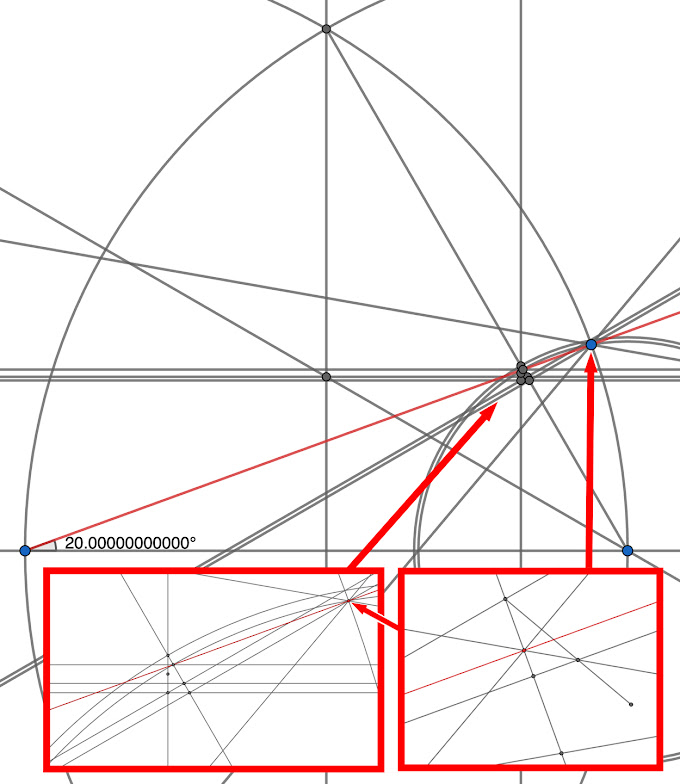The Impossible Trisection
60° TRISECTION MADE POSSIBLE.
The chasm between 60° and 20° angles was thought to be so wide that after two millennia of failing to bridge it, Euclidean angle trisection was finally written off by mathematical theory back in the 1830s. The claim was that trisection had been solved by proving it was mathematically impossible. But many trisection diehards soldiered on, and those who assailed mathematicians with drawings were routinely dismissed out-of-hand. Despite its deep influence on mathematics, no one would take the question of trisection seriously again.
I became one of those diehards. I couldn't agree that even the most rigorous mathematics could account for all the variables or prove impossibility. So I toiled on the problem and thought I'd nailed it a few years ago, but was off by a few hundredths of a degree after testing with better software. But in the process, I'd grown to appreciate geometry and persisted, this time using GeoGebra's interactive geometry software. Not really expecting to find a solution, I did so for the enjoyment of learning. Besides, getting it wrong was always the right answer, because after all, it was impossible.
The other day, though, I got to pondering the difference between a third of a 60° angle's chord, which was constructible, and that of its arc. The objective of bridging the difference became a matter of blazing a path using tools of perpendiculars, parallels, bisectors, arcs, and mainly, linear thirds. Starting with a third of the angle's chord naturally led to the perpendicular and its intersection with the arc. Then arcing back to the difference led to placement of thirds in tandem, ending up at a microscopic triangular structure of two arcs and a line the size of a bacterium, visible only by computer. A point was placed at a linear third within the microscopic structure. Measuring it back to the vertex of the 60° angle, I couldn't believe it—a clean 20°—it worked! I had trisected the 60° angle.
But if the mathematical impossibility theory lingers, please consider that my trisection employs computer-assisted construction able to display microscopic structures invisible to the naked eye, unnoticed through millennia and unanticipated in the 1830s. And that operations surrounding the proportion of a chord segment to its arc using linear thirds were not addressed by the impossibility theory. With the application of digital computation, the construction clearly produces a 20° angle to fifteen decimal places, one third of 60°. So with quadrillion-to-one certainty, Euclidean trisection of a 60° angle has been achieved.
As it turns out, the chasm between 60° and 20° wasn't impossibly wide at all, but all that time had been so small it was just impossible to see.
I've made videos demonstrating the trisection steps-by-step and encourage you to try it in GeoGebra or other software. You might find geometry enjoyable, too. And by the way, squaring the circle is still up for grabs.




Comments
Post a Comment